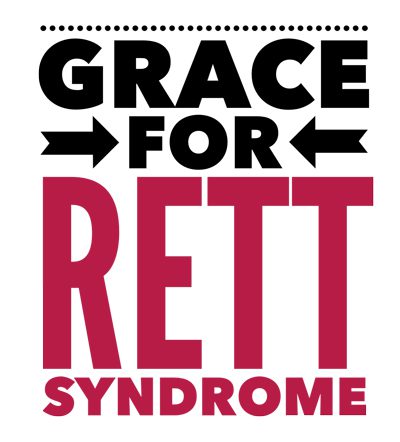by Elizabeth Halford, with contributions from Steve Kaminsky, Ph.D., Janice Ascano, Ph.D., Paige Nues and Kori Coates.
Last year, the 5th edition of the Diagnostic and Statistical Manual of Mental Disorders, Fifth Edition (DSM-V) released. It’s been 19 years since the DSM was last updated. The fourth edition (DSM-IV) was published in 1994. Until now, Rett syndrome has been in this diagnostic manual under the umbrella of autism. Today, it comes out from under that heading. How will this affect the Rett community? Is it good? Bad? Neither? This post aims to explain this complex issue in plain English.
WHAT IS THE DSM?
In order to explain why this book matters, let’s look at what it is. The DSM is the standard classification of mental disorders used by health professionals in the United States. According to psychiatry.org, “It can be used by a wide range of health and mental health professionals, including psychiatrists and other physicians, psychologists, social workers, nurses, occupational and rehabilitation therapists, and counselors. It is also a necessary tool for collecting and communicating accurate public health statistics.” This means that health professionals use this manual in the diagnostic stage but it’s also a general reference as to where different disorders lie in the scale of things.
IRSF’s Rett Gazette Summer 2009 newsletter (pg. 13) reported on this when announcements were made to update the DSM. It explained very well the purpose for diagnostic manuals such as the DSM in saying:
Numeric coding systems exist in order to organize most things in our lives – barcodes for groceries, Dewey decimals for books, social security numbers, license plate numbers, employee id numbers….the list goes on and on. Numbers minimize language differences and interpretations, and in theory allow people and computers to better track and process important information efficiently.
In the medical community, there exists a worldwide numeric classification system to diagnose all known diseases, disorders and syndromes. This system encourages consistent understanding of the diagnosed individual across specialists, care and treatment recommendations, and correct billing for services rendered. As much as this makes sense, it can also feel limiting to reduce a person, particularly our children, to “a number”. And oftentimes, the very system which should provide clarity, leaves enough room for interpretation that it can be more confusing than clear!
Now, those in the UK may be wondering if this applies to them since the DSM is American. According to Hilary Cass’ article for SEN Magazine, the DSM is also used in the UK in addition to the The International Classification of Diseases (ICD) which covers all other (non psychiatric) diseases. In that article, she states, “In DSM-IV, ‘Rett’s Disorder’ is an official diagnosis within the family of autism spectrum disorders. In DSM-V it is planned that Rett syndrome will be removed from the autism group. In fact, the recommendation is that it will be removed altogether from DSM-V.”
WHY MENTAL HEALTH?
So now you may be thinking “Rett isn’t a mental health issue. Is it?” Autism is treated as a psychiatric disorder and has no known genetic cause. However, we know that Rett has a known genetic cause and is a neurological disorder. But is it also a mental health issue? Although a child with Rett could also have a diagnosis of autism, they are two very different disorders.
In his first public presentation on the new changes, Dr. Walter Kaufmann spoke on the subject at the Seventh World Rett Syndrome Conference. He stated that autism is a behavioral diagnosis with multiple causes. The new, more restrictive, guidelines for autism may decrease the number of Rett girls also meeting criteria for autism.
WHY AUTISM IN THE FIRST PLACE?
According to SFARI, “In the current edition of the DSM, Rett syndrome is listed as one of five autism-related conditions, along with Asperger syndrome and childhood disintegrative disorder.”
The genetic cause for Rett was discovered in 1999, five years after DSM-IV was published. So quite simply, we now have a known cause for Rett which means having it under the heading of autism no longer makes sense. Rett and autism do share some attributes which makes it understandable that it would have been first classified this way. Hilary Cass states (here) that, “Now that it is clear that Rett syndrome is a biologically caused condition in its own right, it no longer makes sense to have it as a type of autism.” She goes on to say that the reclassification is a good thing because, “…it allows us to make a much more individualised assessment in each girl as to whether she has Rett syndrome and autism or just Rett syndrome, and to plan accordingly.”
However, it’s not necessarily black and white because some people with Rett have atypical Rett. Which means they only have a clinical diagnosis and not a genetic one. Not all people with Rett have a MECP2 mutation. So the logic to remove Rett from the autism spectrum purely because we now know the genetic cause does have some grey areas.
However, not everyone is in agreement with this change. You may be familiar with Huda Zoghbi whose team first discovered the genetic cause for Rett in 1999. She says of this change (here), “girls with the mildest form of Rett syndrome have symptoms only of autism, and none of the other Rett characteristics such as seizures or difficulty walking. Autism is a clinical diagnosis. Now you throw it out, just because you found out they have a mutation? It doesn’t make sense to me.”
WHAT NOW?
So where will Rett lie now that it’s being taken out from under the umbrella of autism? Rett (according to SFARI) will no longer appear in the DSM at all.
Under the new guidelines Rett syndrome will not be a specific autistic disorder. Although an individual with Rett syndrome and autistic disorder will be diagnosed as “Autism spectrum disorder associated with MECP2 mutations (or associated with Rett syndrome)”. Thus, an individual with only Rett syndrome who does not meet criteria for autism spectrum disorder will not receive a DSM diagnosis unless other mental health disorders are present (e.g., anxiety, depression, autism).
HOW THIS MAY AFFECT YOU
How could the reclassification of Rett as an autism spectrum disorder practically affect your Rett child and your family?
Monica Coenraads of RSRT fears this reclassification could impact access to services in the US. She states here, “…I am quite concerned about the loss of potential services that the removal of Rett from DSM-5 may cause. It would be a pity if school districts decided to no longer offer these services based on a reclassification.” That is, that perhaps Rett no longer being considered autism could minimise the accessibility of services usually available to children who are diagnosed with an autism spectrum disorder. In this post from 2010 when the DSM revisions were first being undertaken, Monica says, “I think worries about losing medical services are probably not warranted. Worries about educational services, however, I’m much more concerned about. For example, it may become more difficult to obtain intensive ABA (applied behavioral analysis) programs and other educational supports where autism has blazed a trail.”
THE FINAL WORD [THE PLAINEST ENGLISH YET]
Now that you’ve read all that, I’d like to leave the final word with the excellent family support directors of IRSF and Cure Rett because they certainly know how to talk in terms that make sense to us parents and laypeople.
Paige Nues, IRSF:
“It is the definition of autism that is changing, not the definition of Rett syndrome. Therefore, instead of Rett = ASD, now Rett = Rett, and autism becomes a part of the constellation of diagnoses she may carry. For example:
- Alice has Rett syndrome, confirmed by clinical features and MECP2 screening (genetic diagnosis)
- AND Alice has epilepsy, confirmed by video eeg monitoring and frequency of episodes (neurologic diagnosis)
- AND Alice has dysphagia, confirmed by swallow study and GI/OT/SLP evaluation (gastroenterologist diagnosis)
- AND Alice has autism, as confirmed by xxx evaluation (mental health, psychiatric or developmental pediatrician diagnosis)
- AND Alice has Long QT, as confirmed by ekg monitoring (cardiologist diagnosis)
- AND Alice has scoliosis, as confirmed by xray (orthopedic diagnosis)
From our perspective, the genetic diagnosis should lead as the core identifier for the child. It is the first lense we should apply when assessing treatment, care, services, supports, interventions, and community.”
Kori Coates, Cure Rett:
“Change almost always leads to feelings of uncertainty. When it’s unclear if those changes will have a positive or negative impact, uncertainty can actually feel a lot more like uneasiness. It’s a fear of the unknown in a life where so much is unknown. But we do know this: when DSM-4 was released, Rett syndrome was a much less well understood condition than it is today. All the research and studies – like IRSF’s Natural History Study – that’ve been done up to this point have helped to clarify the issue tremendously.
From my perspective it’s a type of cure. A cure for misconceptions about the nature of Rett. We know that during the regression stage, many girls display autistic-like characteristics that either diminish or disappear completely once the regression has passed. We know that sometimes these characteristics remain as part of the overall picture and, in those cases, there may be a dual diagnosis of Rett and autism. As research continues, so too our knowledge increases and what was unclear becomes clear. And there’s no uncertainty about that.”
{further reading}
A class apart – Hilary Cass article in SEN Magazine
Reclassification of Rett syndrome diagnosis stirs concerns – SFARI
Rett Syndrome and the DSM-V – an interview between Monica Coenraads and Huda Zoghbi







